Is “My Lady Jane” Based on a True Story? The Real History Behind England’s ‘9 Day Queen’
The real history that inspired the Prime Video series 'My Lady Jane' is far more tragic than the fantasy show
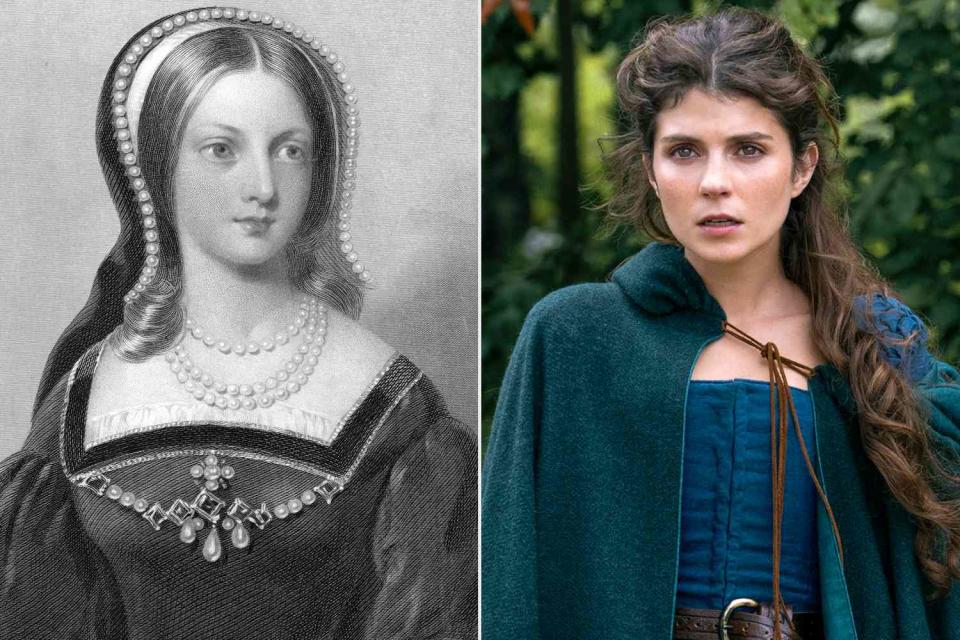
The Print Collector/Print Collector/Getty; Jonathan Prime/Prime Video
Illustration of Lady Jane Grey; Emily Bader as Lady Jane GreyAmazon Prime Video’s new drama series My Lady Jane poses a looming question: “What if history were different?”
The historical fantasy show, which premiered on Prime Video in June 2024, reimagines the brief and tragic reign of the real titular character of the series, blending historical context with an alternative, fantastical spin.
Lady Jane Grey, often dubbed England's "Nine Day Queen," briefly ascended to the throne in 1553. Her story is one of political maneuvering, religious conflict and untimely tragedy. The new series is a “radical retelling,” per the show’s description, where the fates of Jane and other historical figures are altered, while still paying homage to the real events of the 16th century. Oh, and there’s a major fantasy twist.
The series, created by Gemma Burgess and based on the best-selling novel by Brodi Ashton, Cynthia Hand and Jodi Meadows, incorporates the spirit and context of the real Jane, while deviating from reality both through fantasy and altered history.
But how much of My Lady Jane is rooted in the history of the actual queen from which the show takes its name? Read on for the true story of Lady Jane Grey, and how her narrative differentiates from the series.
Who was Lady Jane Grey?
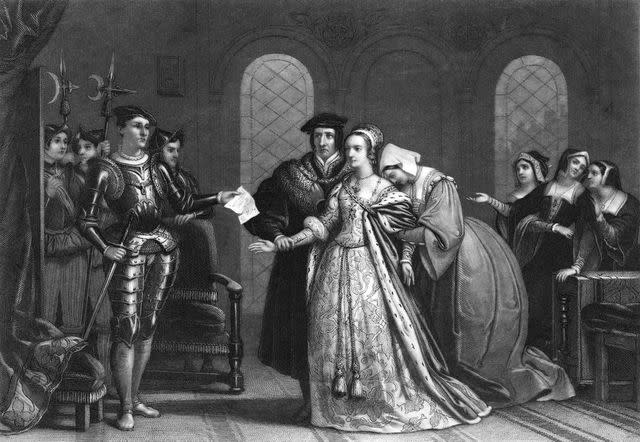
Kean Collection/Archive Photos/Getty
English noblewoman Lady Jane Grey is arrested on the orders of Queen Mary I, London, 1553. She was charged with high treason and executed by beheading at the Tower of London on 12th February 1554.Born in 1537 in Bradgate, Leicestershire, England, Jane was the great-granddaughter of Henry VII (think, The Tudors). She was supremely well educated in classical languages and Protestantism and, like her character on the show, was known for her scholarly pursuits rather than traditional aristocratic activities such as sports or hunting, per palace management organization, Historic Royal Palaces.
Jane also spoke several languages, including Latin, Greek and Hebrew, and was deeply passionate about theology and scholarly correspondence. According to Historic Royal Palaces, when prompted why she wasn’t outdoors, Jane said, “I wist all their sport in the park is but a shadow to that pleasure that I find in Plato. Alas, good folk, they never felt what true pleasure meant.”
Who was Lady Jane Grey married to in real life?
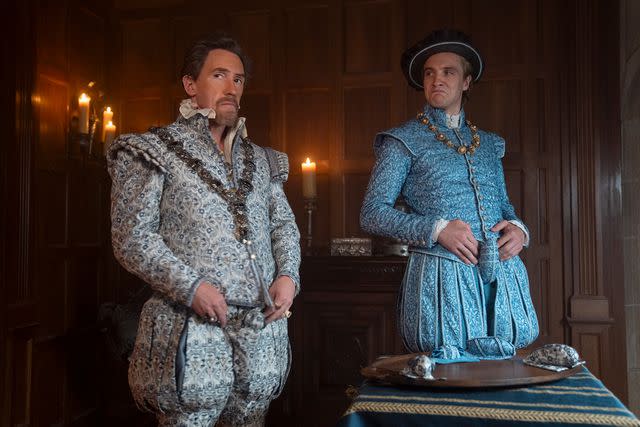
Jonathan Prime/Amazon MGM Studios
Rob Brydon as Lord Dudley and Henry Ashton as Stan Dudley in 'My Lady Jane'.In 1553, Jane was married to Guilford Dudley, the son of John Dudley, Duke of Northumberland — who went on to be a pivotal force in Jane’s ascent to the throne.
Jane’s marriage to Guilford was orchestrated by Dudley to strengthen his family's influence and to position his son as the potential king. Biographers have noted that Jane herself was not in favor of the union.
“We know Jane didn't really want to be married to him,” Nicola Tallis, author of Crown of Blood: The Deadly Inheritance of Lady Jane Grey, told Time. Tallis also added that there’s a “source” that suggests Jane’s mother was also “really, really against this marriage to Guilford Dudley.”
The marriage and Jane’s subsequent claim to the throne were part of a larger political maneuvering. The dying King Edward VI, who was Jane's cousin, was persuaded by Dudley to name her as his successor to ensure a Protestant heir, bypassing his half-sisters Mary and Elizabeth, per Britannica.
What happened to the real Lady Jane Grey?
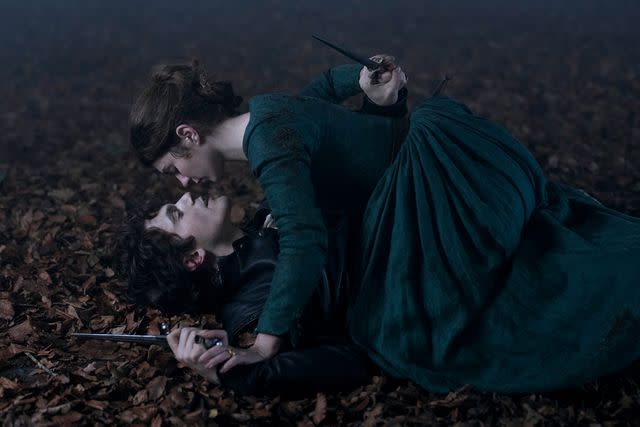
Jonathan Prime/Amazon MGM Studios
Emily Bader as Lady Jane Grey and Edward Bluemel as Guildford Dudley in 'My Lady Jane'.Jane’s reign as queen began on July 9, 1553, following the death of Edward VI from tuberculosis. However, her hold on the throne was precarious. Mary Tudor, Edward's half-sister and rightful heir by an act of Parliament and Henry VIII's will, garnered significant popular support, per Britannica.
On July 19, 1553, just nine days after Jane's proclamation as queen, Mary successfully claimed the throne, leading to Jane’s imprisonment in the Tower of London. Initially, it seemed Jane might be spared, but her father’s involvement in subsequent rebellions against Mary sealed her fate. On Feb. 12, 1554, Jane and her husband Guilford were executed for high treason.
What is fact amid the My Lady Jane fiction?
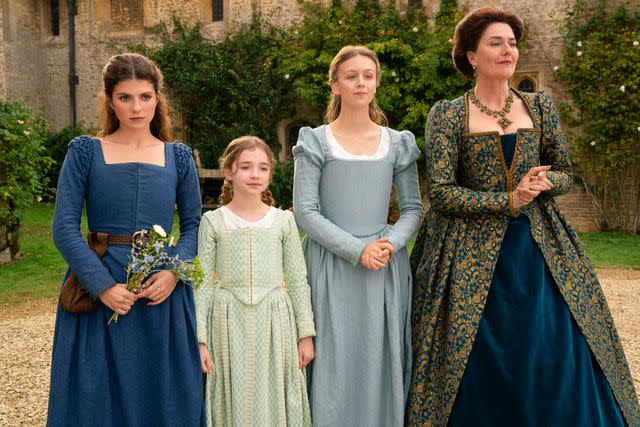
Jonathan Prime/Prime Video
Emily Bader as Lady Jane Grey, Robyn Betteridge as Margaret Grey, Isabella Brownson as Katherine Grey and Anna Chancellor as Frances Grey in 'My Lady Jane.'In the opening of the series pilot, a narrator gives an accurate historical recap (albeit with wit and modern flare) of the events that occurred prior to Jane taking the throne (Edward VI’s death, “bloody shocker” of Jane’s crowning), and what happened nine days later (“off with her head.”)
But the recap ends with the question, “What if history were different?” and the series that ensues deviates from historical accuracy to offer a more whimsical (and less tragic) retelling of Jane’s story.
Still, My Lady Jane maintains the essence of Jane's spirit, highlighting her intellectual curiosity and the political intrigue that surrounded her rise and fall. The show also borrows aspects of the real Jane’s story (getting married against her will) and giving it an alternative narrative (she ends up falling in love with Guilford despite the odds).
In the end, it’s a fantastical reimagination, exploring the factual conflicts through otherworldly elements. In My Lady Jane, the conflict between Protestants and Catholics is reinterpreted as a struggle between regular humans (called Verities), and Ethians (humans who can transform into animals). In the show, Jane (played by Emily Bader) promotes unity and respect for Ethians during her brief reign. Her husband, Guilford Dudley (Edward Bluemel), is depicted as an Ethian who, from time to time, doubles as a horse.
So, is My Lady Jane based on a true story? Yes. And also no. While the show takes significant creative liberties, it is inspired by the real Jane, the events leading up to her brief reign and the conflicts surrounding the era in which she lived.
For more People news, make sure to sign up for our newsletter!
Read the original article on People.

 Yahoo News
Yahoo News 
